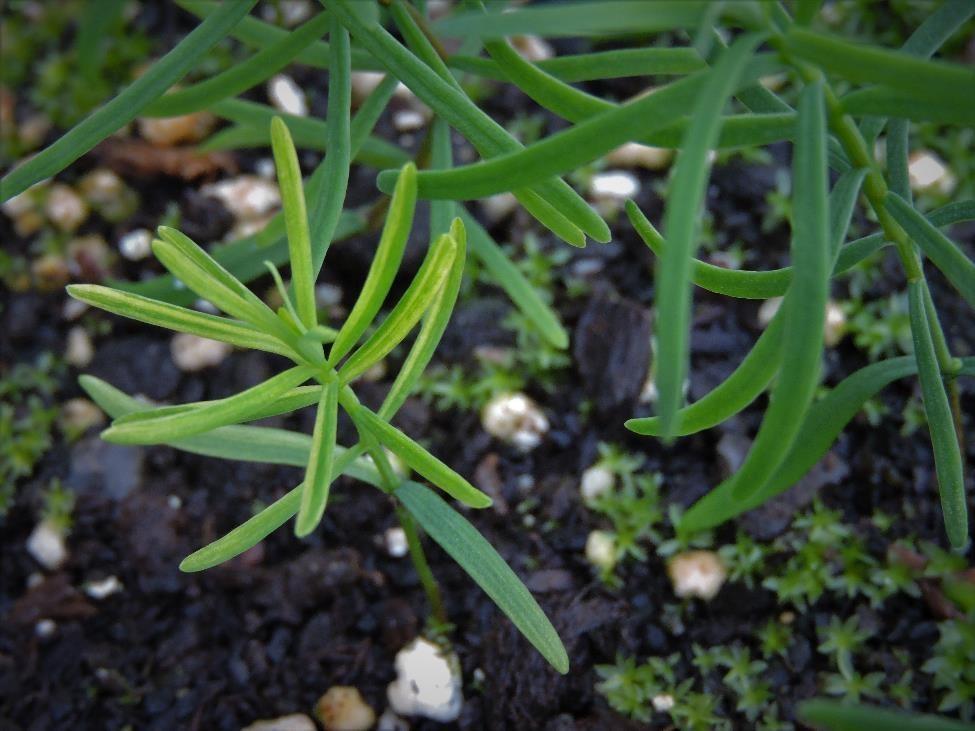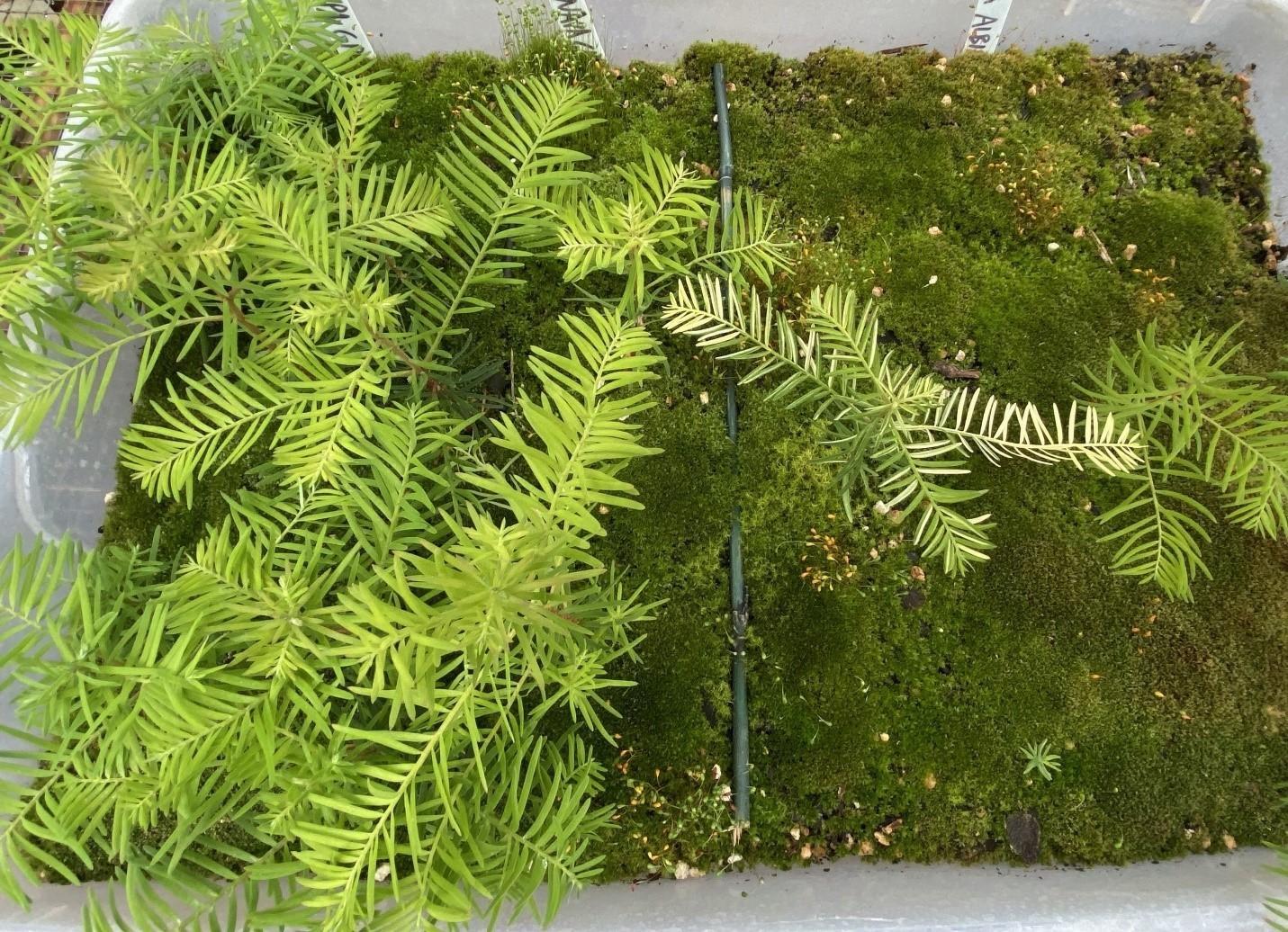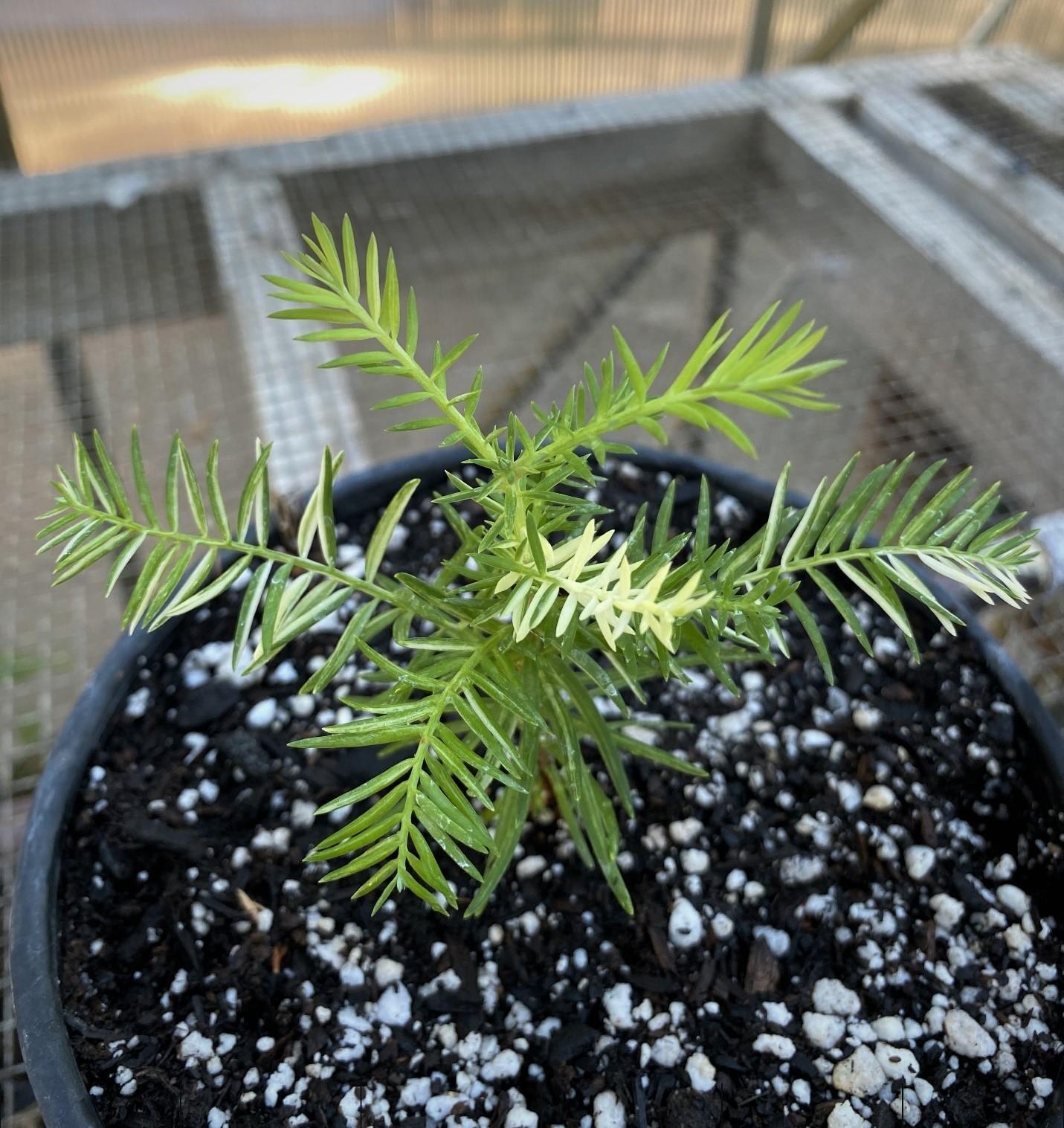
After the initial discovery of chimeric albino redwood cones was made in 2015, another four years would pass before we could see this super rare phenomenon again in Coast redwoods. Amazingly in the fall of 2019, another tree was found to exhibit sectorial, candy cane-like variegation. Like with the first discovery, clear lines of delineation could be seen separating both the albino and green genotypes on this sectorial chimera.

Here's a view of the sectorial albino chimera that produced the chimeric cones in 2019. Within the foliage, you can see the borders between white and green genotypes extending down several branches. In the lower portion of the picture, you can see albino and chimeric cones originating from the variegated sections of the tree.

The sectorial chimera variegation as it appears on the tree. Note how the middle cone appears split down the middle between the two genotypes. Again this is incredibly rare to see and one of nature's beautiful expressions of color.

As we zoom under the microscope, we can see the clear borders between the mutation and normal green cells on this chimeric cone.

In the last picture, we see the same cone a week later after it started splitting open. What adds another level of mystery to the mutational pattern is how the chimeric boundary between the white & green genotypes does not always follow the diamond pattern seen when the cones start splitting open. Seeds originating from these border sections may produce chimeric albino seedlings. It's estimated that approximately 50 cones on the tree were entirely albino, while just 15 exhibited the chimeric albino variegation seen here.

Between September & October of 2019, 8 chimeric albino cones and 29 albino cones were collected off the aerial albino redwood. A total of 37 mutated cones were collected yielding approximately 3300 seeds. In October the first set of seeds were sown in planting trays separated by cone origin. Chimeric cones in one row, albino cones in the second, and green cones in the third. Over the course of the next 2-3 weeks, a total of 41 seedlings germinated for all cone groups. Viability was extremely low at a rate of around 1.2%. This number was surprising considering the species already has an average germination rate of 10-15%. Three of the seedlings were chimeric albino, while another turned out to be a pale albino. Those four variegated seedlings translated to a 0.1% viability rate for the mutated group. These may be minute numbers but are extraordinary examples of such a complex species.

A sectorial albino chimera seedling has germinated around its normal green siblings. Even at this young age the seedling exhibits multi-colored needle arrangement.

In December 2019, this month-old seedling exhibits chimeric and pale albino variegation. The seedling on the left appears normal.

In May 2020 at six months old, the seedlings grew an average height of seven inches. In this picture, we can see just how low seedling viability was with the mutated group. The green seedlings on the left germinated off normal green cones, while the few seedlings on the right developed off the chimeric albino cones.

In July 2020 the four chimeric seedlings were transferred out of the trays and potted in individual containers.
For more information on the discovery of this tree's cones, please visit the "2019 Tales of White Trees" section of the site here: 2019 Tales of White Trees.
